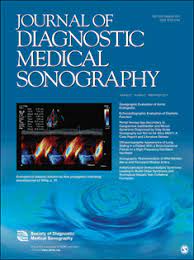Abstract
Objective:
The aim of this study was to investigate the relationship between sonographic vascularity and echogenicity of the thyroid lobes, compared with a participant’s body mass index (BMI).
Materials and Methods:
A total of 3722 participations, with varied BMI, were included in the study. For all the participants, the thyroid-stimulating hormone (TSH) was measured, as well as thyroid volume, sonographic echogenicity, and vascularity were recorded. A multiple regression analysis was performed to assess the relationship between the sonographic vascularity and echogenicity, of thyroid lobes, compared with the participants’ BMI.
Results:
The serum TSH values were significantly higher in patients with a BMI > 25 kg/m². The sonographic vascularity and volume of thyroid lobes were positively correlated the participants’ BMI (P < .005). Sonographic heterogenicity of the left thyroid lobe, right thyroid lobe, and the isthmus were positively associated with BMI (P < .005). However, the hyper/hypoechogenicity did not demonstrate any significant correlation with BMI (P > .005).


